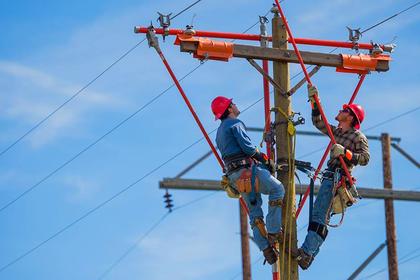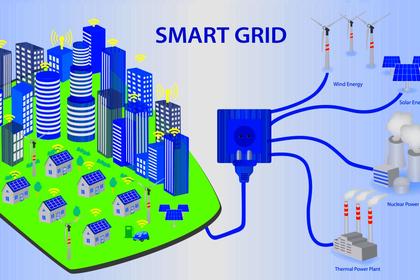
U.S. ARTIFICIAL INTELLIGENCE

U.S. DOE - JANUARY 24, 2024 - The U.S. Department of Energy (DOE) announced today that it will play a key role in the National Artificial Intelligence Research Resource (NAIRR) pilot as part of President Biden’s push to ensure the United States is a leader in harnessing the promise and managing the risks of artificial intelligence (AI). This pilot, led by the U.S. National Science Foundation (NSF), aims to develop a shared national research infrastructure to provide researchers and students with significantly expanded access to computational resources, high-quality data, educational tools, and user support to advance AI research and discovery. As part of the pilot, DOE will provide computational resources to researchers who will build on the Department’s decades of experience in AI.
“AI-driven technologies are already transforming the world, and they provide us with seemingly limitless possibilities in every facet of life,” said U.S. Secretary of Energy Jennifer M. Granholm. “This partnership with NSF, NIH, and other agencies is an exciting opportunity to pair the amazing technology and teams at DOE’s National Laboratories with a diverse group of researchers, students, and stakeholders and contribute to the Biden-Harris Administration’s comprehensive strategy for responsible AI innovation.”
DOE and its National Laboratories have invested in AI since the 1960s, developing cutting-edge tools with applications that range from managing an increasingly complex energy grid to accelerating discovery in targeted treatments for cancer. DOE’s data science and high-performance computing capabilities for both open science and classified needs and longstanding partnerships with industry leaders have led to today’s robust, innovative AI systems.
With decades of experience driving progress in strategically important spaces of AI research and high-performance computing, DOE is mobilizing its broad and deep scientific and technical workforce to carry out the President Biden’s Executive Order on the Safe, Secure, and Trustworthy Development and Use of AI. These efforts will help establish new guidelines, standards, and best practices for AI safety and security; promote innovation and competition; protect Americans’ privacy; and strengthen U.S. leadership abroad.
Divided into four operational areas—NAIRR Open, NAIRR Secure, NAIRR Software, and NAIRR Classroom—the NAIRR pilot is bringing private sector, non-profit and philanthropic organizations, industry partners, and nine Federal agencies together to provide access to advanced computing, datasets, models, software, training, and user support to U.S. based researchers and educators.
DOE will co-lead NAIRR Secure alongside the National Institutes of Health (NIH) to enable AI research requiring privacy and security-preserving resources and will assemble exemplar privacy preserving resources.
To support NAIRR Secure, DOE will extend operations of Summit, one of the world’s most powerful AI-capable supercomputers at DOE’s Oak Ridge National Laboratory in Tennessee, which was scheduled to be decommissioned at the end of 2023 and will be extended through October 2024. Through this extension, DOE continues to take accelerated computing to the next level by providing scientists with incredible computing power to solve challenges in energy, artificial intelligence, human health, and other research areas that were previously impractical or impossible. DOE is also expanding its efforts in trustworthy and responsible AI research, and researchers on Summit will also have access to Oak Ridge’s CITADEL framework, a partnership between the lab and the U.S. Department of Veterans Affairs (VA) to safely and securely transfer and analyze veterans’ health records at scale that also protects privacy.
Additionally, DOE is expanding its research efforts under its Biopreparedness Research Virtual Environment program with a new project that will leverage generative AI to create a high-quality set of synthetic pathology reports. This effort builds on a longstanding partnership between DOE, NIH, VA, and the Centers for Disease Control and Prevention.
DOE will also offer access to the Argonne Leadership Computing Facility’s AI Testbed, a growing collection of some of the world’s most advanced AI accelerators for open scientific research. With advanced capabilities for AI training, inference, and data-intensive tasks for a diverse set of AI workloads, the AI Testbed housed at DOE’s Argonne National Laboratory in Illinois, will enable researchers to explore and accelerate next-generation applications to advance the use of AI for science and discovery.
DOE laboratory experts in high-performance computing, networking, and data management will also contribute to groups who are helping inform the design of the NAIRR pilot.
-----
Earlier:

















